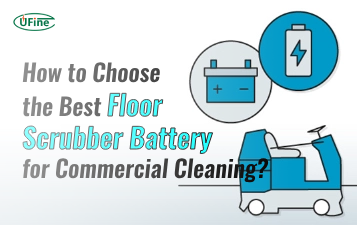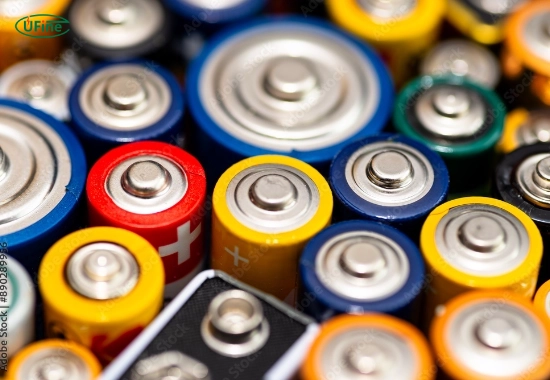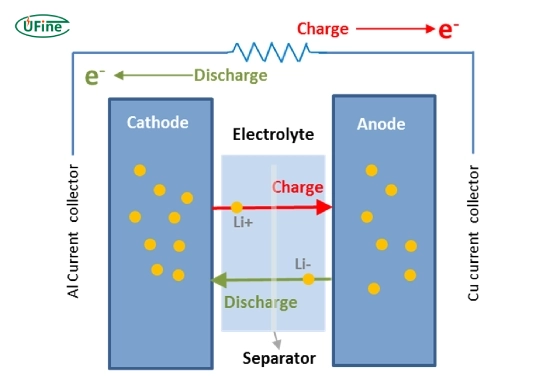Power batteries play a crucial role in powering high-drain devices, which require consistent and efficient energy delivery. From smartphones and laptops to electric vehicles and portable gaming systems, these devices demand batteries that offer both long-lasting performance and durability. In this article, we’ll explore the ins and outs of power battery technology, how it works, and how you can maximize its performance for high-drain applications.
Part 1. What is a power battery?
A power battery is a type of rechargeable battery designed to provide a high discharge rate, making it ideal for powering devices that require significant energy in short bursts or continuously for extended periods. Unlike standard batteries, power batteries are engineered for high energy density, quick charging, and prolonged operational life.
These batteries are commonly used in high-drain devices such as:
- Smartphones
- Electric vehicles (EVs)
- Laptops
- Power tools
- Medical equipment
- Drones and robotics
A key feature of power batteries is their ability to maintain steady voltage levels, ensuring optimal device performance even under heavy usage.
Part 2. How do power batteries work?
Power batteries operate on the principle of electrochemical energy storage. Inside the battery, an electrolyte causes a chemical reaction between the positive electrode (cathode) and the negative electrode (anode), producing electricity that powers the connected device.
Key components of power batteries:
- Anode: Typically made of materials like graphite, the anode stores lithium ions during charging.
- Cathode: Often composed of lithium compounds, the cathode releases lithium ions during discharge.
- Electrolyte: The medium that facilitates ion transfer between the anode and cathode.
- Separator: Prevents direct contact between the anode and cathode, avoiding short circuits.
The lithium-ion battery is the most common type of power battery thanks to its high energy density, lightweight design, and rechargeable nature.
Part 3. Why are power batteries ideal for high-drain devices?
High-drain devices demand batteries that can deliver consistent power output without overheating or degrading too quickly. Power batteries excel in these situations due to their high discharge rates, which allow them to supply energy quickly.
Benefits of power batteries for high-drain devices:
- Fast charging: They can recharge quicker than standard batteries, minimizing downtime.
- Long cycle life: Power batteries maintain performance over hundreds or even thousands of charge cycles.
- Temperature resistance: Advanced power battery designs include thermal management systems to prevent overheating.
- Steady voltage delivery: This ensures the device operates smoothly without performance dips.
Part 4. Types of power batteries
Power batteries come in various types, each suited to specific applications. Some of the most common types include:
- Lithium-ion (Li-ion) batteries: These are the most widely used power batteries found in smartphones, laptops, and electric vehicles. They offer high energy density, low self-discharge rates, and fast charging capabilities.
- Lithium-polymer (Li-Po) batteries: Li-Po batteries are lightweight and flexible, making them ideal for drones and slim electronic devices. They are known for their stability and customizable shapes.
- Nickel-metal hydride (NiMH) batteries: While less common today, NiMH batteries are still used in some power tools and older devices. They are more environmentally friendly compared to Ni-Cd batteries and provide moderate energy density.
- Solid-state batteries: Solid-state batteries are an emerging technology that replaces the liquid electrolyte with a solid one. They promise greater safety, higher energy density, and longer lifespans.
Part 5. Factors affecting power battery performance
Understanding the factors that influence power batteries’ efficiency and lifespan is essential to maximizing their performance in high-drain devices.
Key factors include:
- Charge and discharge rates: Overcharging or deep discharging can degrade the battery over time.
- Temperature: Extreme heat or cold can reduce battery efficiency and lifespan.
- Usage patterns: Consistently running the battery to 0% can negatively impact its cycle life.
- Quality of components: High-quality materials in the anode, cathode, and electrolyte ensure better performance.
- Battery management system (BMS): A good BMS prevents overcharging, overheating, and excessive discharge.
Part 6. How to maximize power battery performance?
To ensure your power battery lasts longer and maintains optimal performance, follow these practical tips:
- Avoid overcharging: Modern power batteries come with built-in protection, but it’s still a good practice to unplug your device once it reaches 100% charge.
- Use proper chargers: Always use chargers recommended by the manufacturer to avoid overvoltage or damage to the battery.
- Maintain moderate temperatures: Keep your device and battery away from extreme heat or cold. Ideally, batteries should be operated within a temperature range of 20°C to 25°C (68°F to 77°F).
- Partial charging: Instead of fully charging and discharging, aim to keep the battery level between 20% and 80% to prolong its cycle life.
- Update device firmware: Many devices come with firmware updates that optimize battery usage and improve efficiency.
Part 7. The future of power battery technology
The future of power batteries looks promising with advancements in materials and design. Researchers are exploring technologies such as:
- Graphene batteries: Offering faster charging times and higher energy density.
- Silicon anodes: Providing significantly higher capacity than traditional graphite anodes.
- Recyclable batteries: Reducing environmental impact by making batteries easier to recycle.
These innovations aim to make power batteries more efficient, sustainable, and compatible with next-generation devices.
Part 8. Common applications of power batteries
Power batteries are used across a variety of industries, including:
- Consumer electronics: Smartphones, tablets, and laptops.
- Electric vehicles: Tesla, Nissan Leaf, and other EVs rely heavily on advanced lithium-ion batteries.
- Medical devices: Portable oxygen concentrators and defibrillators.
- Power tools: Cordless drills and saws.
- Renewable energy: Storing energy generated by solar panels and wind turbines.
Part 9. Tips for choosing the right power battery
When selecting a power battery for your device or application, consider the following:
- Capacity (mAh or Wh): Choose a battery with sufficient capacity for your device’s needs.
- Discharge rate (C-rate): Ensure the battery can deliver the required power output.
- Size and weight: Opt for a battery that fits your device without adding excessive bulk.
- Manufacturer reputation: Purchase from reputable brands to guarantee quality and safety.
Artikel Terkait: Differences Between Power Battery and Energy Battery
Part 10. FAQs
-
What is the difference between a power battery and an energy battery?
A power battery is designed for high discharge rates, making it suitable for high-drain devices. Energy batteries, on the other hand, focus on providing sustained energy output over a longer period, ideal for applications like solar energy storage. -
Can power batteries be recycled?
Yes, power batteries can be recycled. Lithium-ion batteries, for example, can be processed to recover valuable materials like cobalt, nickel, and lithium. -
How long do power batteries typically last?
The lifespan of a power battery depends on its usage and maintenance. On average, lithium-ion power batteries can last between 300 to 500 charge cycles or approximately 2 to 5 years. -
Are power batteries safe?
Modern power batteries include built-in safety features like overcharge protection and thermal management systems. However, mishandling or using counterfeit chargers can pose safety risks. -
Do power batteries lose capacity over time?
Yes, all rechargeable batteries lose capacity over time due to chemical degradation. Proper maintenance can slow this process and extend the battery’s lifespan.
Related Tags:
More Articles

How to Choose the Best Floor Scrubber Battery for Commercial Cleaning?
Selecting the ideal floor scrubber battery ensures a long runtime, rapid charging, and minimal maintenance for efficient commercial cleaning operations.
Battery for Blower vs Battery for Leaf Vacuum: Which One Should You Choose?
Battery for blower vs leaf vacuum—learn the key differences in power, fit, and runtime to choose the right battery for your outdoor tool needs.
How to Choose the Right Battery for Blower?
Choosing the right blower battery? Consider voltage, capacity, chemistry & usage. This guide helps match the best battery for peak performance.
How to Choose the Best Insulated Battery Box for Lithium Batteries?
Choosing the Best Insulated Battery Box for Lithium Batteries? Discover key factors such as size, material, and safety for optimal protection and performance.
7 Critical Elements on a Lithium Battery Shipping Label
What must be on a lithium battery shipping label? Learn 7 key elements to ensure safety, legal compliance, and correct handling across all transport modes.





